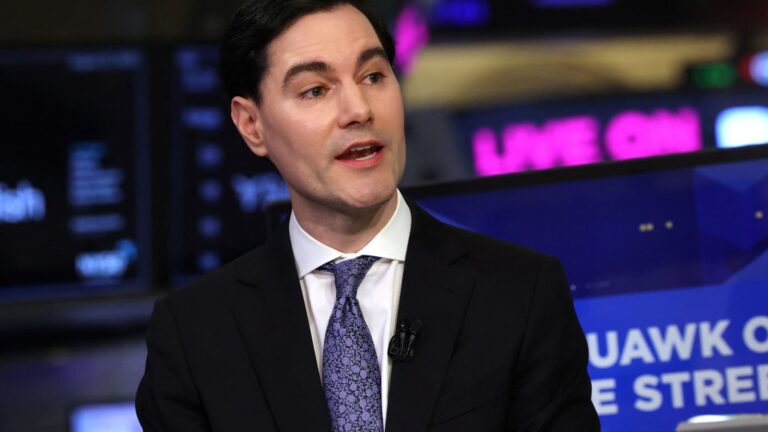Here are five key things investors need to know to start the trading day:
1. September cut?
It’s looking more and more likely that the Federal Reserve will soon start cutting rates, and investors are thrilled. After this week’s cooler-than-expected consumer inflation report, Fed funds futures now forecast a nearly 100% chance that the central bank will decrease the borrowing cost at its next policy gathering in September, according to CME’s Fed Watch tool. That’s good news for traders, who have been waiting with bated breath for a cut since late last year. Small-cap stocks — which are seen as beneficiaries of a lower-rate environment — rallied in Wednesday’s session as a result. The good vibes didn’t stop there: The S&P 500 and Nasdaq Composite also notched new all-time closing highs for a second day in a row. Investors will get more inflation data Thursday morning, with July’s producer price index due in at 8:30 a.m. ET. Follow live market updates here.
2. Succession planning
David Zervos, Jefferies
Scott Mlyn | CNBC
Speaking of the Fed, CNBC’s Steve Liesman on Wednesday reported that President Donald Trump is now considering 11 candidates to succeed Jerome Powell after the Fed chief’s term expires next year. Those names, according to two administration officials, include outsiders David Zervos, chief market strategist at Jefferies, and Rick Rieder, chief investment officer for global fixed income at BlackRock. Fed Governors Michelle Bowman and Chris Waller, who advocated for rate cuts at the central bank’s last meeting, are also in the running. Prediction markets warmed up to the idea of Zervos taking the role following CNBC’s report, with his odds on Kalshi shooting higher Wednesday.
3. Breakup budget
Chief executive officer of Google Sundar Pichai.
Marek Antoni Iwanczuk | Sopa Images | Lightrocket | Getty Images
While analysts aren’t taking Perplexity AI’s bid for Google’s Chrome browser very seriously, the offer put a spotlight on Alphabet’s sprawling assets as it waits to see if a judge will order a breakup of its businesses. After a federal judge ruled last year that Google has held a monopoly in search and text advertising, the Department of Justice indicated that it was considering a breakup of Google as a remedy. Ahead of the looming decision, CNBC broke down how some analysts value the tech giant’s non-search assets, which include Chrome, YouTube and Waymo.
4. Davids vs. Goliath
David Mericle, Goldman Sachs chief U.S. economist, speaks during an interview with CNBC on the floor at the New York Stock Exchange (NYSE) in New York City, U.S., August 13, 2025.
Brendan McDermid | Reuters
Goldman Sachs is sticking by its economic analysis, despite taking heat from Trump. The president on Tuesday told the bank’s CEO David Solomon to fire his chief economist over a tariff forecast, but Goldman economist David Mericle doubled down on the bank’s analysis on Wednesday. Mericle told CNBC that Goldman is confident consumers will bear the brunt of cost hikes from Trump’s tariffs. By the fall, he said, everyday Americans can expect to feel two-thirds of the impact of the president’s levies. While Goldman Sachs may be the one receiving criticism from the president, it isn’t alone in its forecast. Several other economists are also predicting that Trump’s tariffs will push inflation higher.
5. Contrasting outlooks
Eastman Kodak is simultaneously juggling two vastly different truths. First, the camera company is benefitting from a revival of film, powered by Gen Z consumers who are looking for more unique and retro-looking photos than what their smartphones can capture. But despite that cultural tailwind, that the 133-year-old photography company is grappling with serious financial challenges tied in part to debt. As CNBC’s Laya Neelakandan reports, that’s left the business saying it is planning to make significant changes in the face of doubt about its ability to keep operations going.
— CNBC’s Lisa Han, Yun Li, Sean Conlon, Steve Liesman, Jeff Cox and Laya Neelakandan contributed to this report.
